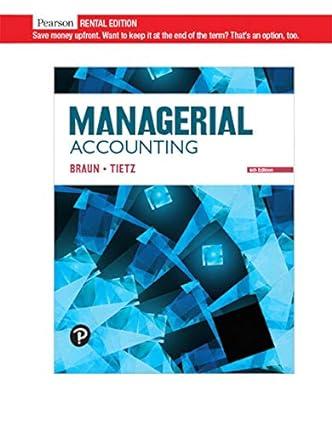Percival Pharmaceuticals manufactures an over-the-counter allergy medication called Breathe. Percival is trying to win market share from
Question:
Percival Pharmaceuticals manufactures an over-the-counter allergy medication called Breathe. Percival is trying to win market share from Sudafed and Tylenol.
The company has developed several different Breathe products tailored to specific markets. For example, the company sells large commercial containers of 1,000 capsules to health-care facilities and travel packs of 20 capsules to shops in airports, train stations, and hotels.
Percival’s controller, Dana Harley, has just returned from a conference on ABC. She asks Terrance Yost, supervisor of the Breathe product line, to help her develop an ABC system.
Harley and Yost identify the following activities, related costs, and cost allocation bases:

The commercial-container Breathe product line had a total weight of 8,500 kilos, used 1,200 machine hours, and 240 required samples. The travel-pack line had a total weight of 6,000 kilos, used 400 machine hours, and required 340 samples. The company produced 2,500 commercial containers of Breathe and 80,000 travel packs.
Requirements:
1. Compute the cost allocation rate for each activity.
2. Use the activity-based cost allocation rates to compute the indirect cost of each unit of the commercial containers and the travel packs.
3. The company’s original single-allocation-based cost system allocated indirect costs to products at $350 per machine hour. Compute the total indirect costs allocated to the commercial containers and to the travel packs under the original system. Then compute the indirect cost per unit for each product.
4. Compare the activity-based costs per unit to the costs from the simpler original system.
How have the unit costs changed? Explain why the costs changed as they did.
Step by Step Answer:






